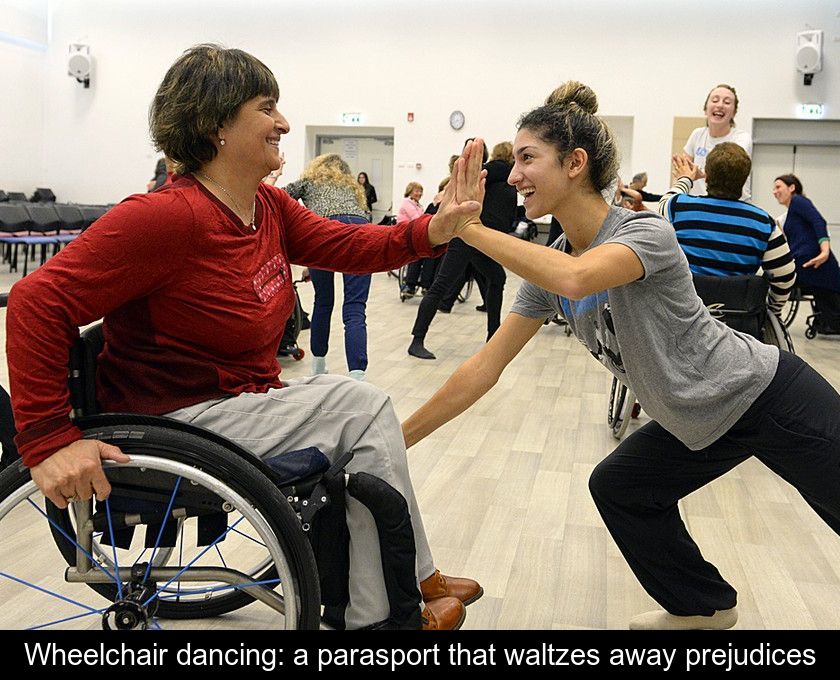Wheelchair Dancing: A Parasport That Waltzes Away Prejudices
It is generally believed that the wheelchair is incompatible with dancing. But this is false. Israeli dancer Tomer Margalit provided striking proof of this during the opening ceremony of the Paris 2024 Paralympic Games. For all those who were amazed by her performance and/or who want to dance despite their disability, here are 5 things to know about wheelchair dancing.
1- Wheelchair dancing is one of the forms of adapted dance.
Wheelchair dance is a parasport designed for individuals in wheelchairs. It involves practicing various types of dances (such as Latin dances, ballroom dances, or improvisation) adapted to the person's motor abilities.
Moreover, wheelchair dance is just one of the possible forms of adapted dance. In nursing homes, for example, residents are also offered chair dance or seated dance classes specifically designed for seniors.
She adapts dance to disabilities so that everyone can dance.
Wheelchair dancing can take different forms, depending on the type of dance practiced (solo, couple, or group) and the degree of disability of the participants.
But it always relies on the same principle: the idea that everyone can dance, regardless of their disability and physical limitations.
The concept of adaptation is at the heart of this practice. Some wheelchair dance workshops, such as those offered by the Dana company based in Rennes, allow for a great deal of improvisation so that each participant can move in their own way and without inhibitions.
3- It mixes wheelchair dancers and able-bodied dancers.
Wheelchair dancing is also characterized by mixing wheelchair dancers with able-bodied dancers. In couple dances, one can see two partners in wheelchairs dancing together or a duo composed of one partner in a wheelchair and one able-bodied partner.
Israeli dancer Tomer Margalit, who dances with her able-bodied partner Orel Chalaf, offered a remarkable demonstration to the world during the opening ceremony of the Paris 2024 Paralympic Games. Their performance was indeed one of the most striking of this ceremony, where all bodies were represented.
4- This activity brings many benefits.
No need to be a wheelchair dance champion like Tomer Margalit to step into a dance club! Even if you have a physical disability, you have the right to dance and it could do you a lot of good.
Wheelchair dancing brings numerous benefits to people with disabilities because it allows them to:
• improve their physical condition, similar to rehabilitation but much more fun ;-) This activity enhances posture, movement coordination, and memory.
• gain dexterity and autonomy through better use of their wheelchair.
• boost their self-confidence and develop a better self-image.
• combat social isolation by practicing dance in pairs or groups.
As a group sport practiced to music and in a cheerful atmosphere, wheelchair dancing also has a considerable impact on the well-being of those who practice it. It generally provides disabled individuals with a great sense of freedom and helps them rediscover the joy of movement.
5- This discipline has its own competitions.
Wheelchair dancing was invented in Sweden in 1968. More than fifty years later, it remains largely unknown to the general public, even though the opening ceremony of the Paris 2024 Paralympic Games helped promote it.
To date, wheelchair dancing is not part of the Paralympic sports. Nevertheless, it is the International Paralympic Committee that oversees international competitions in this discipline. There are indeed European and World Championships held every two years.







